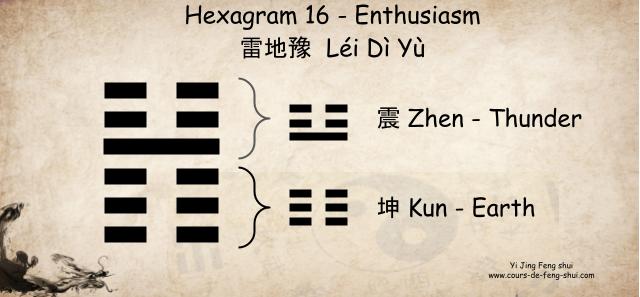
Hexagram 16 of the Yi Jing, known as Enthusiasm or 雷地豫 (Léi Dì Yù) in Chinese, is composed of the upper trigram ☳震 (Zhen – Thunder, the eldest son) and the lower trigram ☷坤 (Kun – Earth, mother). This hexagram symbolizes a moment of joyful eagerness, where a higher power puts other forces into motion, inspiring collective action and excitement.
Jia Zi Combination:
Hexagram 16 is associated with Ding Hai (丁亥), the 24th combination of the sexagesimal cycle. In this context:
- 丁 (Ding) represents Yin Fire, the celestial stem.
- 亥 (Hai) represents the Pig, the terrestrial branch.
Interpretation of the Hexagram’s Structure:
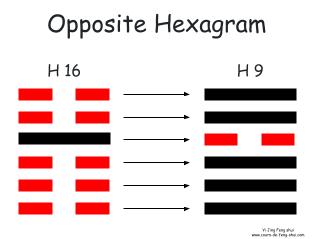
Opposite Hexagram:
- The opposite hexagram of 16 is Hexagram 9 – Xiao Chu (小畜), which represents the power of taming the small. This is derived by replacing the Yang lines with Yin lines and vice versa.
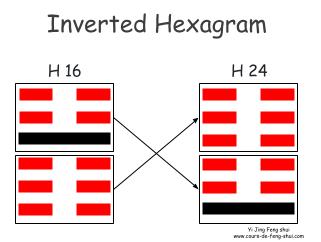
Inverted Hexagram:
- The inverted hexagram, which reflects the origin of the situation, is Hexagram 24 – Fu (复), meaning “The Return”. This is obtained by swapping the positions of the two trigrams.
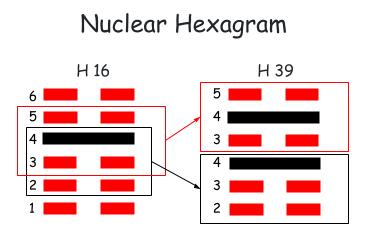
Nuclear Hexagram:
- The nuclear hexagram, representing the heart of the issue, is Hexagram 39 – Jian (蹇), meaning “Obstacle”. This is formed by using the four central lines of the hexagram to create two new trigrams.
Mutant Hexagram (Derived):
When a line in Hexagram 16 mutates, it gives rise to a new hexagram, showing how the situation may evolve:
- Line 6 mutates to form Hexagram 35
- Line 5 mutates to form Hexagram 45
- Line 4 mutates to form Hexagram 2
- Line 3 mutates to form Hexagram 62
- Line 2 mutates to form Hexagram 40
- Line 1 mutates to form Hexagram 51
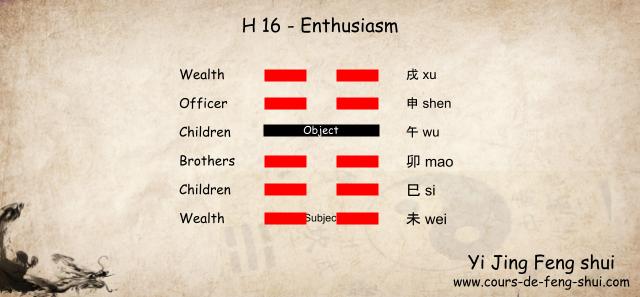
Taoist Yi Jing Wen Wang Gua
In the Taoist interpretation following the Wen Wang Gua (Liu Yao) method, Hexagram 16 is part of the Zhen (Wood) family and is associated with the first generation:
- Subject is placed on the first line.
- Object is placed on the fourth line.
Six Relatives: Each line of the hexagram corresponds to one of the six relatives, reflecting different aspects of the querent’s life:
- 6th line: 戌 (xu) Earth – Wealth
- 5th line: 申 (shen) Metal – Officer
- 4th line: 午 (wu) Fire – Children
- 3rd line: 卯 (mao) Wood – Brothers
- 2nd line: 巳 (si) Fire – Children
- 1st line: 未 (wei) Earth – Wealth
Hexagram 16 is a Liu He hexagram, indicating support and combinations between earthly branches:
- 卯 and 戌 combine.
- 巳 and 申 combine.
- 未 and 午 combine.